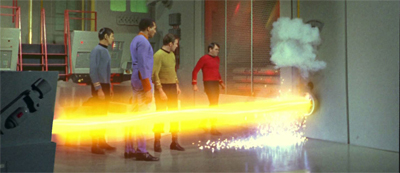
Posted on 08/25/2018 6:42:59 PM PDT by BenLurkin
The field of deep learning — which has computers learn to recognize patterns based on training data — has been too risky to use much for spacecraft decision-making. But that may change as missions grow more complicated and the cost of launching small spacecraft decreases, said Ossi Saarela, space segment manager at the computation software company MathWorks.
…
Most spacecraft can make minor autonomous decisions on their own — noticing they're veering off course by watching the stars, for instance, and adjusting to get back on track — but the trajectory itself is uploaded from the ground. Similarly, spacecraft can shut down a malfunctioning part, but troubleshooting and rebooting are left to faraway human experts.
But researchers can't account for every contingency when arriving at a new asteroid or planet, as above, or docking with another spacecraft — a situation Saarela likened to teaching a spacecraft how to go through a door.
…
Using a deep learning process, however, a computer can learn how to recognize features on its own from training data. For instance, researchers might show a computer a lot of pictures, some containing cats, so it can identify when pictures have cats in them. This process is used for computer vision and speech recognition, and in astronomy, it has been used to pinpoint exoplanets and search for evidence of gravitational waves, as well as to analyze sky-distorting gravitational lenses. But human programmers can't peek in and see what features the computers are using in their analyses — leading, for instance, to an image-recognition algorithm identifying sheep only when there is also a green field.
(Excerpt) Read more at space.com ...
I’d want Linux out in the big black over Windoze.
Lots of luck. The human brain is better at adapting to unknown situations, but still would have a hard time knowing what it’s seeing when faced with a sentient creature from another planet that it has never seen before.
If you think you can program a computer to outshine the human brain, go right ahead.
Just for giggles, they should name their new computer “HAL”.
“Open the pod bay doors, HAL.”
How ‘bout an engine that can get us there first.
Pack plenty of pens, pencils, and paper pads so the “HAL” can’t eavesdrop that much.
Assuming any local cameras are disabled.
I’m afraid I cant do that Dave.
We’re not going into interstellar space with conventional manned rockets. Way too slow for that.
There is one answer that everyone is ignoring: clones. They can be grown from a cell when the probe reaches the destination, educated in whatever skill they need to accomplish a task, and then conveniently thrown out the airlock when the mission is complete.
Never gonna make man-cewed spacecraft that will last long enough. We cant make tanks and pipes that will survive oxidation or corrosion and leaks and eventual failures that will survive for decades without replacement. We cant make anything that will last long enough and we dont have room for enough replacement parts and we dont have replicator technology that builds the complicated proprietary vlsi chips that can fail due to radiation bursts or overheating.
The more I see the limited lifespan of things necessary for crewed spacecraft, the less possible it becomes when you look at it realistically through the lifespans of devices we have essentially made nearly perfect now. Even the best made things will not survive as long as needed.

Queue Captain Obvious.
Looking for cats on space rocks must be a spy operation on cat space rock living quarters and mining operations.
We all know that cats frequently disappear and cannot be found, or turn up in the most unlikely places (navigation errors obviously). It was prevciously thought they went to the Moon, but now NASA has learned their spacial exploits are far greater and grander, hence the need to spy on them.
Want proof? Here are some famous Apollo shots secretly retrieved from NASA before they were airbrushed for public release:



You can see what all the fuss is really about and why it is so necessary to find out as much as we can about our secret masters by spending so much money which otherwise would be used to feed the homeless and for courses in navel gazing.
“... devices we have essentially made nearly perfect now”
—
they said the same thing about devices shortly after Graham Bell and about trains in the 50s ...
“... we dont have replicator technology” ... yet
Then again how long some parts last is not as important as the speed at which the craft is traveling. Has Project Orion not been killed in ‘64 travel to Mars and Saturn would be common place today, Mars trip, for instance via Orion, would take 3 days not years. Same for interstellar travel. Alpha Centuri System would have been a 2 year venture with a crew of thousands.
Thanks BenLurkin.
 |
||
| · join · view topics · view or post blog · bookmark · post new topic · subscribe · | ||
| Google news searches: exoplanet · exosolar · extrasolar · | ||
Wonder where Space.com got that. The real bottom line is this.
There is a way to cross all these millions of light years of distance by going through some form of folds in the space time continuum.
Some kind of advanced computer technology is required to navigate this—where are we? How do we get from here to where we want to go?
I do not understand the physics; I think the claim is that Lockheed Martin has figured out how to do it but may also not understand the physics.

Disclaimer: Opinions posted on Free Republic are those of the individual posters and do not necessarily represent the opinion of Free Republic or its management. All materials posted herein are protected by copyright law and the exemption for fair use of copyrighted works.